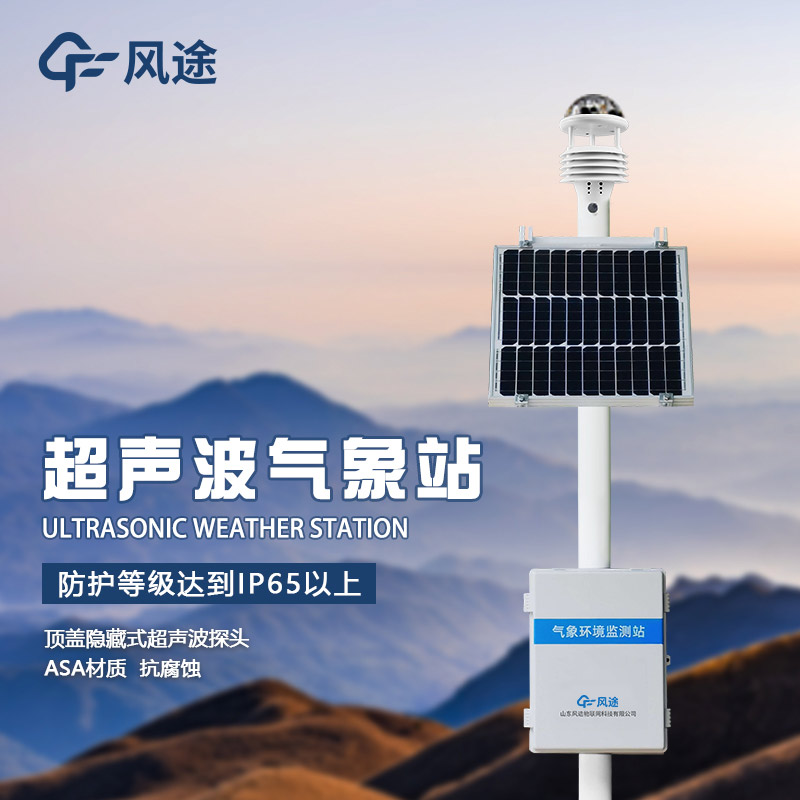Tianyi Sensor IOT Technology Co., Ltd
Sales Manager:Ms. Emily Wang
Cel,Whatsapp,Wechat:+86 15898932201
Email:info@fengtutec.com
Add:No. 155 Optoelectronic Industry Accelerator, Gaoxin District, Weifang, Shandong, China

Sales Manager:Ms. Emily Wang
Cel,Whatsapp,Wechat:+86 15898932201
Email:info@fengtutec.com
Add:No. 155 Optoelectronic Industry Accelerator, Gaoxin District, Weifang, Shandong, China
time:2025-04-28 10:04:38 source:Weather Station viewed:2 time
Traditional weather stations mostly use mechanical devices such as wind speed and direction indicators to measure meteorological elements. These devices have some limitations. For example, mechanical components are prone to wear and icing, requiring regular maintenance and calibration. Moreover, their measurement accuracy may be affected in harsh environments. However, ultrasonic technology has brought many conveniences to small weather stations:
Firstly, it has high measurement accuracy. Ultrasonic sensors measure meteorological parameters such as wind speed and direction accurately by emitting ultrasonic pulses and receiving the echo signals, using the time difference. Its measurement accuracy is higher than that of traditional mechanical sensors, and it can reflect the actual meteorological conditions more accurately.
Secondly, there is no mechanical wear and it has a long lifespan. The Ultrasonic weather station has no mechanical components like rotating cups and wind vanes, so there will be no mechanical wear. This greatly reduces the failure rate of the equipment, extends its service life, and reduces the maintenance cost.
Thirdly, it has a high integration degree and a small size. Ultrasonic sensors can be highly integrated with other meteorological sensors (such as temperature, humidity, and air pressure sensors, etc.), making the overall structure of the weather station more compact and small, which is convenient for carrying and installation.
There are mainly three types of small ultrasonic weather stations: handheld, portable, and fixed.
The handheld Ultrasonic weather station is small in size and light in weight, making it easy to carry. It generally uses an engineering plastic ABS shell, which is sturdy and durable. It has no moving parts and does not require maintenance or on-site calibration. It comes with a built-in display screen that can display the detected data in real time. It also has a built-in Bluetooth module, which can transmit the data to a mobile phone or computer through a dedicated APP. It is suitable for on-site inspections in the field, handheld multi-meteorological element detection, mobile patrol inspections, power safety inspections, ship wharf and navigation detection, urban environmental monitoring, and other scenarios, providing convenient meteorological monitoring services for outdoor adventures, environmental assessments, disaster warnings, etc.
The portable Ultrasonic weather station has the characteristics of high integration, high reliability, low power consumption, small size, quick installation, and telescopic ability. It supports various communication methods, requires no debugging, can be folded and telescoped, and comes with a rechargeable power source. It is mainly suitable for field monitoring. For example, in agriculture, it is used to monitor the microclimate of farmland, providing a scientific basis for agricultural production; in the environmental protection field, it is used for air quality monitoring; and in scientific research, it provides meteorological data for researchers.
The fixed Ultrasonic weather station is composed of an integrated ultrasonic sensor, a support frame, a solar panel and lithium battery power supply system, a data transmission module, etc. After installation, it can operate stably for a long time, automatically collect and upload meteorological data, and also has an automatic alarm function. It is widely used in many fields such as meteorological observation stations, airports, ports, agricultural production, and environmental protection monitoring, providing important data support for meteorological research, meteorological forecasting, and disaster warnings.

Ultrasonic resonance anemometry is a commonly used meteorological observation technology. Its principle is to utilize the propagation characteristics of ultrasonic waves in the air to measure wind speed and wind direction. When sound waves propagate in the air, their speed will be affected by the wi...
Although traditional mechanical wind speed and direction meters have, to some extent, met basic requirements, they have limitations in terms of accuracy, response speed, and reliability. With the advancement of technology, the 3D Ultrasonic Anemometer based on the time - difference method has been d...
Cultural relics carry the memories of human civilization and are precious non-renewable resources. Meteorology, as an important part of the natural environment, has an intricate connection with the protection of cultural relics.Meteorological conditions are directly related to the preservation...
In today's society, with the acceleration of the processes of industrialization and urbanization, air quality issues have received increasing attention from people. There is a wide variety of pollutants in the air. Among them, the "four gases" (carbon monoxide, sulfur dioxide, nitrogen...